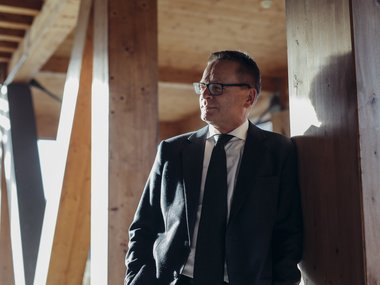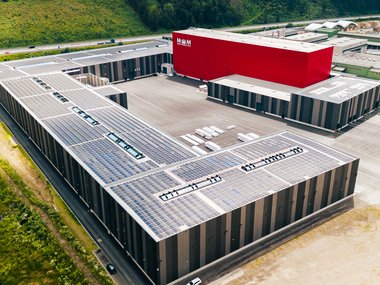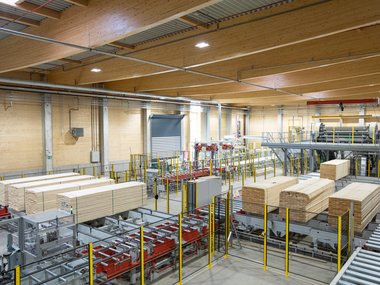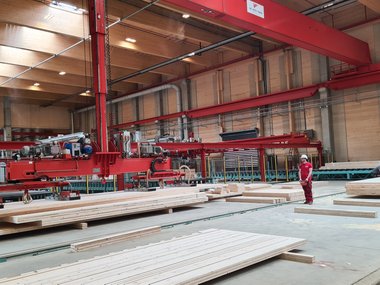
MM TIMBER LOG: The cycle for our future
The fact check is clear and the result is well known: Wood has the smallest ecological footprint of all building materials and binds the harmful greenhouse gas CO2 . Richard Stralz, CEO of the Mayr-Melnhof Holz Group, is convinced that we must utilise this in the fight against climate change, both for ourselves and for the future of our children.
Is our future really at stake?
Richard Stralz: Our climate has already changed and continues to change. The capricious weather conditions of recent months and years are a stark reminder of the seriousness of the situation: we need to act before it's too late. Wood is a natural partner in this endeavour - if we use it sensibly in a cascading manner and manage our forests sustainably.
Forest management plays a key role?
Of course, because only a managed forest is a climate-fit forest and can make the absolutely necessary contribution in the fight against climate change. After just a few decades in which a forest has been left to its own devices, the CO2 store of a forest becomes a net CO2 emitter caused by decay processes. Proper forest management with thinning and timely timber harvesting as well as the reforestation of harvested forest areas with the right distribution of tree species, on the other hand, secure the forest as a carbon store and oxygen producer. Young forests between 40 and 60 years of age absorb the most CO2 . This sustainable management also preserves the forest as a species-rich ecosystem.
Does sustainability in the use of wood mean a long-term approach?
That's right, and it means gradual utilisation. It is our duty to ourselves and our children and grandchildren to use our resources sensibly, sustainably and ecologically, but this applies to all natural resources. Sensible refers to the way in which a material is used and is determined by the properties of the raw material. For example, building a cellar out of wood is not sensible. In contrast, the use of cross laminated timber
as a load-bearing wall or ceiling, a support or glued laminated timber - spans of over 50 metres are possible here - makes sense. Sustainable and ecological refer to the cascading utilisation of the raw material over the longest possible service life. This means that we must always start with the highest-value use, with thermal utilisation at the very end of the cascade after decades of material use of the material in various products.
So houses made of wood are part of the solution to the climate problem?
We must bear this in mind: One cubic metre of wood binds around one tonne of CO2. Utilising wood therefore creates a second forest, as the carbon remains stored in the processed material. At the same time, new trees grow back through reforestation, which in turn store carbon and release oxygen into the environment. This is the cycle for our future. Climate-friendly construction starts with the avoidance of CO2, because the use of wood in construction has an important substitution effect: wood has excellent building physics properties and can often replace other materials that are CO2 -intensive to produce and are not renewable. I have already mentioned walls, ceilings, beams and supports. In relation to its strength, wood is very light in weight, making it ideal for urban redensification, the conversion of attics and for adding storeys, as significantly lower weights have to be absorbed by the existing building structure. The substitution of other building materials is the greatest lever for climate protection. Products manufactured in Austria from Austrian wood save around eight million tonnes of CO2 per year, which corresponds to around ten percent of Austria's total greenhouse gas emissions in one year.
Do we have enough wood available for the construction?
In Austria alone, enough wood grows every 30 seconds to build a detached house. Our forest cover has increased by 23 per cent in the last 25 years, and even more in the rest of Europe. We know that cement and steel production account for around a third of CO2 production worldwide. If we want to do something for the climate, we need to use more wood in long-lasting wood products, in the private sector but above all in the public sector, such as in kindergartens, schools, care facilities, etc., so a big appeal to politicians: better and sustainable framework conditions for the use of wood must be created now. We have enough wood, and it is available regionally.
Article published in: https://www.businessmonat.at/jaenner-2024/der-kreislauf-fuer-die-zukunft
Your media relations contact person
CONTACT






